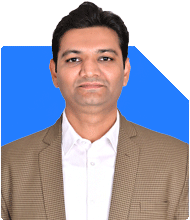40-Year-Old Woman Seeking Retirement Plan with 50 Lakh Home Loan
Ramalingam Kalirajan |8317 Answers |Ask -Follow
Mutual Funds, Financial Planning Expert - Answered on Jul 16, 2024
He has an MBA in finance from the University of Madras and is a certified financial planner.
He is the director and chief financial planner at Holistic Investment, a Chennai-based firm that offers financial planning and wealth management advice.... more

Hi I am a working women at 40. I have about 50 lacs debt in home loan. I have a house worth 2.0 crs and gold around 1 crore. I want to plan my retirement fund as I m in a high burnt out corporate job. My retirement age is 50 years. I can invest 75k monthly comfortably apart from my house emi and monthly expenses. What split do you suggest for me so that I have 4 crs corpus at the time of retirement. Thanks
Current Financial Overview
Assets: House worth Rs. 2 crores, gold valued at Rs. 1 crore.
Liabilities: Home loan debt of Rs. 50 lakhs.
Monthly Investment Capacity
Comfortable monthly investment capacity of Rs. 75,000, excluding home loan EMIs and regular expenses.
Investment Strategy
Diversified Portfolio: Allocate investments across equity and debt instruments.
Equity Allocation: Consider equity mutual funds for growth potential.
Debt Allocation: Allocate a portion to debt instruments like debt mutual funds or fixed income options for stability.
Risk Management
Diversification: Spread investments to mitigate risks associated with any single asset class.
Regular Review: Periodically review and rebalance portfolio based on market conditions and financial goals.
Retirement Corpus Projection
Target Corpus: Aim for Rs. 4 crores by age 50.
Investment Horizon: Plan investments with a focus on long-term growth and compounding.
Financial Discipline
Expense Management: Monitor and control discretionary expenses to maximize savings.
Debt Repayment: Continue servicing home loan while focusing on wealth accumulation for retirement.
Final Insights
By adopting a disciplined approach to investment, balancing risk with growth potential, and staying committed to your financial plan, you can build a substantial retirement corpus by age 50. Seek professional guidance to tailor an investment strategy aligned with your specific financial circumstances.
Best Regards,
K. Ramalingam, MBA, CFP,
Chief Financial Planner,
www.holisticinvestment.in
You may like to see similar questions and answers below
Ramalingam Kalirajan |8317 Answers |Ask -Follow
Mutual Funds, Financial Planning Expert - Answered on May 09, 2024
Ramalingam Kalirajan |8317 Answers |Ask -Follow
Mutual Funds, Financial Planning Expert - Answered on Jul 03, 2024
Radheshyam Zanwar |1593 Answers |Ask -Follow
MHT-CET, IIT-JEE, NEET-UG Expert - Answered on May 04, 2025
Vipul Bhavsar |68 Answers |Ask -Follow
Tax Expert - Answered on May 04, 2025
Vipul Bhavsar |68 Answers |Ask -Follow
Tax Expert - Answered on May 04, 2025
Vipul Bhavsar |68 Answers |Ask -Follow
Tax Expert - Answered on May 04, 2025
Radheshyam Zanwar |1593 Answers |Ask -Follow
MHT-CET, IIT-JEE, NEET-UG Expert - Answered on May 04, 2025
Dr Nagarajan Jsk |364 Answers |Ask -Follow
NEET, Medical, Pharmacy Careers - Answered on May 04, 2025

Best wishes.
POOCHO. LIFE CHANGE KARO.
Dr Nagarajan Jsk |364 Answers |Ask -Follow
NEET, Medical, Pharmacy Careers - Answered on May 04, 2025
Nayagam P P |4477 Answers |Ask -Follow
Career Counsellor - Answered on May 04, 2025
Nayagam P P |4477 Answers |Ask -Follow
Career Counsellor - Answered on May 04, 2025
Nayagam P P |4477 Answers |Ask -Follow
Career Counsellor - Answered on May 04, 2025




















